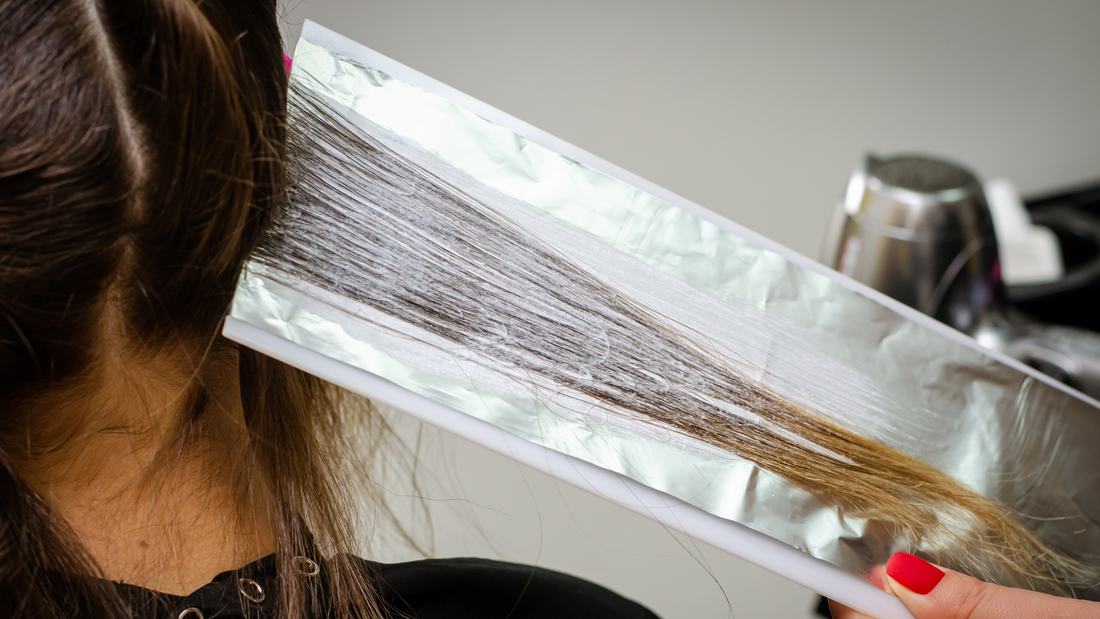
Can You Color Relaxed Hair? What You Need to Know Before Dyeing
Relaxers and hair color both offer versatility, but combining the two requires extra care. If you’ve ever wondered whether you can safely color relaxed hair, the answer is yes—with some important caveats. Here’s what you need to know before dyeing chemically straightened hair, and how to keep your strands strong, healthy, and vibrant.
Can You Dye Relaxed Hair?
Yes, you can color relaxed hair—but that doesn’t mean you should rush into it. Relaxing and coloring are both chemical processes that alter the structure of your hair. When done improperly or too close together, the combination can lead to dryness, breakage, or long-term damage. That’s why timing, technique, and maintenance are crucial.
According to the American Academy of Dermatology, both relaxers and hair dyes are considered chemical treatments that should be spaced out to minimize risk.
Wait Between Chemical Services
It's best to wait at least 2–3 weeks between relaxing and coloring. This gives your hair time to recover and strengthen. Applying both processes too closely together overworks the strands, increasing the likelihood of overprocessing and breakage.
Generally, it’s safer to relax first, then color. This way, you can ensure your hair is strong enough to handle a second chemical process—and avoid overlapping relaxer on freshly colored hair.
Choose the Right Type of Color
Not all dyes are suitable for relaxed hair. Here’s how different types affect chemically treated strands:
-
Semi-permanent color: Deposits color without penetrating the hair shaft. It’s the gentlest and fades over time. Ideal for toning or covering gray hair with minimal stress.
-
Demi-permanent color: Lasts longer than semi-permanent, and while it does use a low-volume developer, it’s still relatively gentle.
-
Permanent color: Penetrates the hair cuticle and cortex using a developer and ammonia. Permanent dyes offer long-term results but pose a greater risk to relaxed hair.
-
Bleach/lighteners: The most aggressive treatment. This combination—bleach on relaxed hair—should only be done by a licensed professional, as it's one of the leading causes of breakage.
According to Byrdie, applying bleach or permanent dye to relaxed hair without proper timing and conditioning can lead to irreversible damage.
Focus on Moisture and Protein Balance
Relaxed and colored hair needs targeted care. Relaxers break down protein bonds, while color can dehydrate hair strands. To protect your hair:
-
Deep condition weekly with both moisturizing and protein treatments
-
Use a leave-in conditioner and a daily moisturizer
-
Seal in moisture with lightweight oils like jojoba, grapeseed, or argan
Hair that lacks balance will show signs of either dryness or elasticity loss—both indicators that you need to adjust your routine.
Use Color-Safe, pH-Balanced Products
Use shampoos and conditioners formulated for color-treated and chemically processed hair. Avoid sulfates, and stick to gentle cleansers and strengthening masks that won’t strip color or moisture.
For protection, always use a heat protectant before styling, and limit hot tools during the first few weeks after coloring or relaxing.
When to Talk to a Professional
If you're going lighter or doing both services for the first time, consult a stylist who specializes in textured, relaxed hair. A trained eye will know how to assess porosity, strength, and determine safe timing.
Even if you're used to DIY haircare, this is a moment where professional guidance can preserve your hair's long-term health.
Key Takeaways
-
Yes, you can color relaxed hair—but not at the same time as your relaxer.
-
Always wait 2–3 weeks between chemical treatments.
-
Choose gentler color options, and avoid bleach unless done professionally.
-
Prioritize deep conditioning, moisture, and protein treatments.
-
Use sulfate-free, color-safe products and avoid heat when possible.
At MJ’s Mane, we believe Black women deserve options that honor both beauty and wellness. Our Signature Relaxer System is designed with scalp-soothing, strengthening ingredients like sea moss and kakadu plum—because a healthy hair foundation matters most.
Want more expert-backed relaxed hair content?
Join the waitlist to get early access to our product launch + haircare tips tailored just for you.






